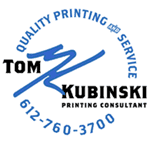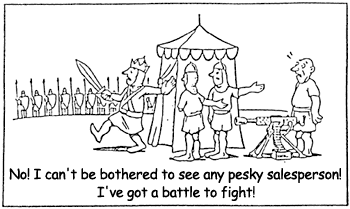 
Tom Kubinski Mary Albers www.sextonprinting.com
|
April 2002 TK's Korner
Creative Coating Techniques It has been great to hear from many of you on what topics you would like to see covered in future issues of TK's Korner. The most common requests were:
It will give you a visual representation of what could be done to snap up your design, make it look different from all the rest, as well as, be very informative on the many options available to you. Now, we know that it will be difficult to read about it and totally understand. Yet, knowing that I have a lot of experience in working with these techniques, understand what can and can not be done, know how to show you before press what this will look like and how to properly run/bid the project, will set your mind at ease and quite possibly make you look like a hero. They are sure to show you how even small changes in the coating technique can make all the difference in the world!
This collection has about 50+ samples for you and your clients to review. Just give me a call and let me know what your thoughts are. I'll gladly drop by to discuss what options are open to accomplish your design. If I happen to have a close sample, the book is yours to view and show. If we need to do some tests in order to get a better idea of what works for your creative idea, then we have many options available to us.
Keep in mind though, that UV burn issues may occur with some PMS colors when aqueous coating. This was covered in detail in the December 2001 issue of TK'S Korner. Simply go to the bottom of this issue and you will see it as well as others listed. Point, Click and you are there. You will also see how computer to plate technology can give you a variety of different screens/halftones being printed at the same time in one pass with a heavy solid, will not fill in or require you to use two plates as one would expect by using film. Going further with this, my client was able to see how screens of 90%, 87% and 85% looked with a major solid when they were thinking that their film starting point was going to be around 75%. This was a great tool for them to make sure they got what they wanted. Printing the same PMS color on a variety of different stocks, can give you a completely different color. I have a great sample that shows how one PMS red color on 15 different stocks can look as if many different colors were used. Something to keep in mind when trying to keep a family looks consistent, yet changing the base stock. There are also some very helpful Paper Selection Charts available. With these, you will be able to see what type of stock within the same family may yield you the preferred look. What I mean by this is that if you have a cherry pie image, it would be a good choice to go with a warm red paper versus a cool blue shade of white. The latter, will make your cherry pie appear a little bit moldy while the other will give you what you want. Or, you will see which of the uncoated, matte, silk, velvet or gloss of the same stock would be a better choice for a certain type of subject and why. This has been a great tool for me to show. I have had many interesting questions on what I think would work best for this design or product. Together, we will find the best method to go with to make your next printed piece really stand out from the rest.
If you would like to join me on one of our upcoming tours, if there is something that you would like me to address, or if you know of someone who might like to receive TK's Korner, please let me know via e-mail at tkubinski@sextonprinting.com or phone. Take care and have a great day.
Successfully, |



 There are also a couple books out that show some coating techniques that I have found to be very interesting. We may wish to pursue one of these ideas.
There are also a couple books out that show some coating techniques that I have found to be very interesting. We may wish to pursue one of these ideas.